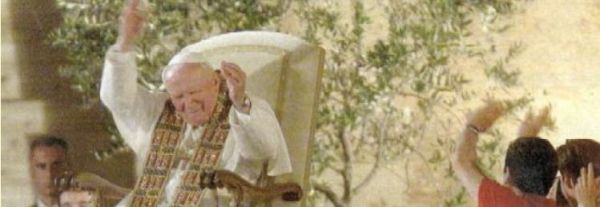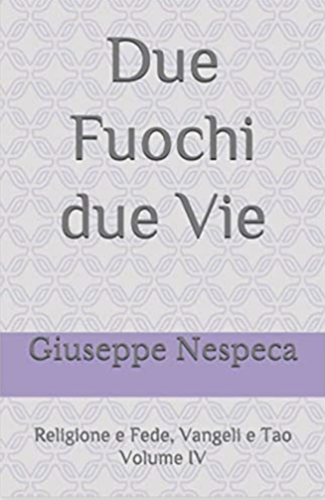1. "The temple of God is holy, and you are that temple" (I Cor 3: 17). We listen once again to these words of the apostle Paul in today's solemn liturgy of the Feast of the Dedication of the Lateran Basilica, Cathedral of Rome, Mother of all the churches.
Every place set aside for divine worship is a sign of that spiritual temple, which is the Church, made up of living stones: of the faithful united by the one faith, of the participation in the Sacraments and of the bond of charity. The Saints, in particular, are precious stones of that spiritual temple.
Holiness, fruit of the unceasing work of God's Spirit, shines in the new Blesseds: Juan Nepomuceno Zegrí y Moreno, priest; Valentin Paquay, priest; Luigi Maria Monti, religious; Bonifacia Rodríguez Castro, virgin; Rosalie Rendu, virgin.
2. The vision of the Sanctuary presented to us in today's liturgy by the prophet Ezechiel describes a stream that flows from the temple carrying life, vigour and hope: "Everything will live where the river goes" (Ez 47: 9). This image expresses God's infinite goodness and his design of salvation which scales the walls of the sacred enclosure and thus becomes the blessing of the entire earth.
Juan Nepomuceno Zegrí y Moreno, an upright priest of deep Eucharistic piety, understood well how the proclamation of the Gospel needed to become a dynamic reality, able to transform the apostle's life. As a parish priest, he was committed to "visibly providing for all those who, suffering from abandonment, must drink from the bitter chalice and receive nourishment from the bread of tears" (19 June 1859).
He developed his redemptive spirituality with this purpose, born from intimacy with Christ and directed towards charity for the neediest. He was inspired, through invocation to the Virgin of Mercy, Mother of the Redeemer, to found the Sisters of Charity of the Blessed Virgin Mary of Mercy, with the aim of making God's love ever-present where there was "just one suffering to heal, one misfortune to console, one single hope to instil in hearts". Today this Institute, following in the footsteps of its Founder, continues its dedication to witness and promote redemptive charity.
3. Fr Valentin Paquay is truly a disciple of Christ and a priest according to the heart of God. As an apostle of mercy, he spent long hours in the confessional, with a special gift to place sinners anew on the right path, reminding men and women of the greatness of divine forgiveness. Placing the celebration of the Eucharistic mystery at the centre of his priestly life, he invited the faithful to come frequently to communion with the Bread of Life.
Like many saints, at a young age Fr Valentin was entrusted to the protection of Our Lady, who was invoked under the title of Cause of our Joy in the Church where he grew up, in Tongres. Following his example, may you be able to serve your brothers and sisters to give them the joy of meeting Christ in truth!
4. "I saw water flowing out from beneath the threshold of the temple... everything will live where the water goes" (Ez 47: 1, 9). The image of water, which brings everything back to life, illuminates well the life of Bl. Luigi Maria Monti, entirely dedicated to healing the physical and spiritual wounds of the sick and the orphaned. He loved to call them "Christ's poor ones", and he served them, enlivened by a living faith and sustained by intense and continual prayer. In his evangelical commitment, he was constantly inspired by the example of the Holy Virgin and placed the Congregation he founded under the sign of Mary Immaculate.
How relevant is the message of this new Blessed! For his spiritual sons and for all believers, he is an example of faithfulness to God's call and to the proclamation of the Gospel of charity. He is a model of solidarity towards the needy and of affectionate entrustment to the Immaculate Virgin.
5. The words of Jesus proclaimed in today's Gospel: "Stop turning my Father's house into a marketplace" (Jn 2: 16), question today's society, often tempted to turn everything into commodity and profit, putting aside values and dignity which do not have a price. Since the human person is the likeness and dwelling place of God, a purification is necessary, so as to protect the person beginning with his or her social condition or work.
Bl. Bonifacia Rodríguez Castro was dedicated entirely to this activity; she herself was a worker who understood the risks of the social condition of her age. In the simple and protected life of the Holy Family of Nazareth, she discovered a model of the spirituality of work that gives the human person dignity and makes every activity, however little it may seem, an offering to God and a means of sanctification.
This is the spirit that she wished to instil in working women, starting with the Josephine Association and then with the foundation of the Servants of St Joseph, who continue their work in the world with simplicity, joy and renunciation.
6. In an era troubled by social conflicts, Rosalie Rendu joyfully became a servant to the poorest, restoring dignity to each one by means of material help, education and the teaching of the Christian mystery, inducing Frédéric Ozanam to place himself at the service of the poor.
Her charity was inventive. Where did she draw the strength to carry out so many things? From her intense prayer life and the continuous praying of the Rosary, which she never abandoned. Her secret was simple: to see the face of Christ in every man and woman, as a true daughter of St Vincent de Paul and like another Sister of her epoch, St Catherine Labouré. Let us give thanks for the witness of charity that the Vincentian family gives unceasingly to the world!
7. "He spoke of the temple of his body" (Jn 2: 21). These works evoke the mystery of the death and Resurrection of Christ. All of the Church's members must be conformed to Jesus crucified and risen.
Mary, Mother of Christ and our Mother, is our strength and guide in this commitment. May the new Blesseds, whom we contemplate today in the glory of Heaven, intercede for us. May it also be granted to us all that we one day find ourselves in Paradise, to experience together the joy of everlasting life. Amen!
[Pope John Paul II, homily 9 November 2003]












